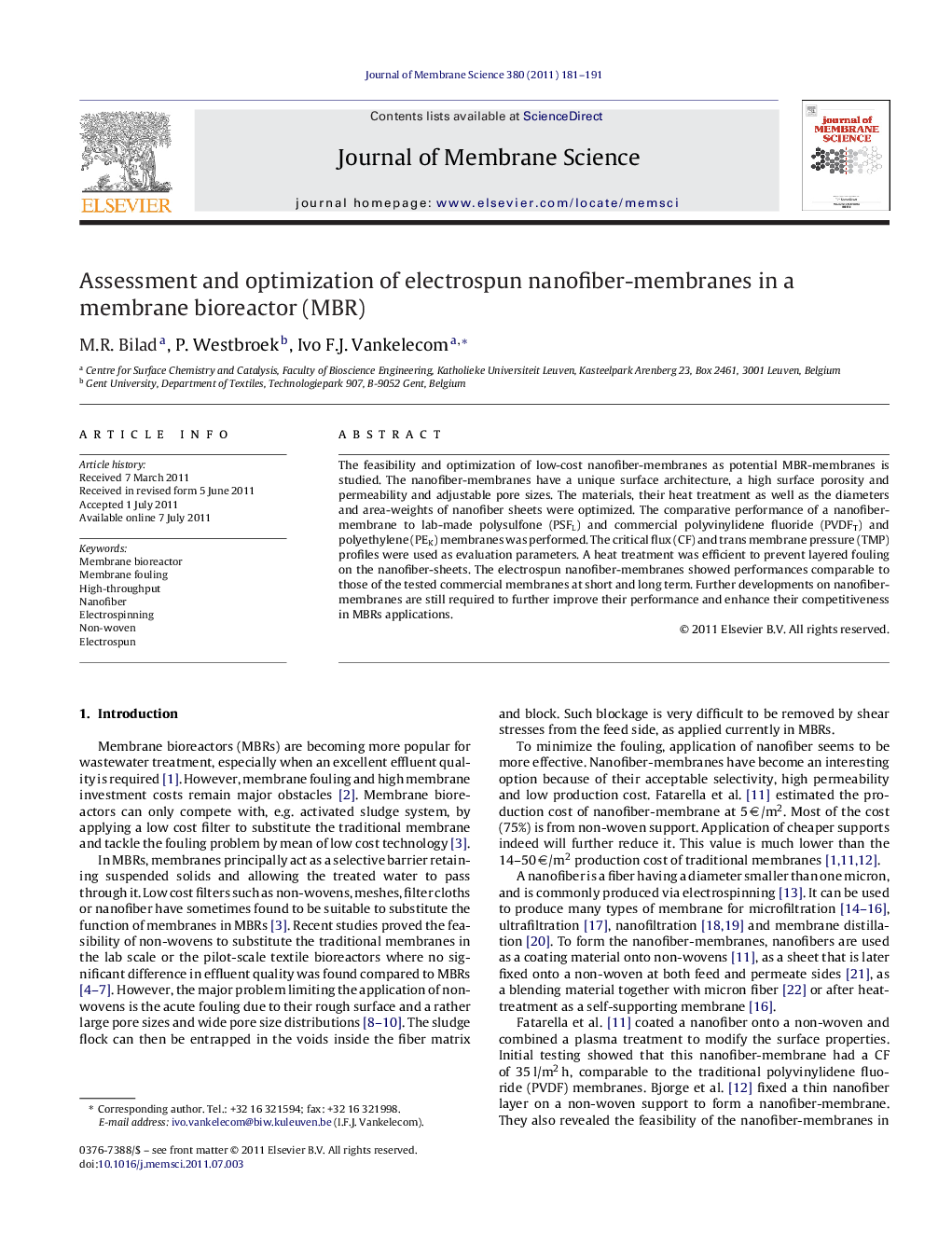| Article ID | Journal | Published Year | Pages | File Type |
|---|---|---|---|---|
| 635234 | Journal of Membrane Science | 2011 | 11 Pages |
The feasibility and optimization of low-cost nanofiber-membranes as potential MBR-membranes is studied. The nanofiber-membranes have a unique surface architecture, a high surface porosity and permeability and adjustable pore sizes. The materials, their heat treatment as well as the diameters and area-weights of nanofiber sheets were optimized. The comparative performance of a nanofiber-membrane to lab-made polysulfone (PSFL) and commercial polyvinylidene fluoride (PVDFT) and polyethylene (PEK) membranes was performed. The critical flux (CF) and trans membrane pressure (TMP) profiles were used as evaluation parameters. A heat treatment was efficient to prevent layered fouling on the nanofiber-sheets. The electrospun nanofiber-membranes showed performances comparable to those of the tested commercial membranes at short and long term. Further developments on nanofiber-membranes are still required to further improve their performance and enhance their competitiveness in MBRs applications.
Graphical abstractFigure optionsDownload full-size imageDownload high-quality image (125 K)Download as PowerPoint slideHighlights• The feasibility and initial optimization of nanofiber-membranes as MBR-membranes is studied. • A heat treatment was efficient to prevent severe fouling of the nanofiber-membrane. • The nanofiber-membranes showed performances comparable to traditional membranes.
